Public Transport in London | Guide to London
Guide to London
- Pre-departure advice for London: preparing for your trip
- London Airports: How to get to the centre
- Accommodation in London: the best options
- What to see in London
- Public Transport in London
- The English Gastronomy
- London nightlife
- The surroundings of London: cities not to be missed
Transport around London is a vast subject to discuss. Having finished our Walking Tour of the centre and wanting to continue our London visit, to reach certain zones we will have to take some form of public transport. But London is huge, spread out and chaotic. If you aren't used to large cities it can feel a bit difficult to get around without getting lost or choosing the wrong type of public transport. So today I have produced a guide to London's transport system, especially for my Erasmus readers.
First of all, here is the link to the official site of Transport for London and a list of the public transport which serves the entire city and its surrounds:
- Tube : also known as the Underground
- DLR : Docklands Light Railway, the trains serving the area around the Docklands area in the east
- Overground : the trains running on the surface
- Bus
- National Railway : public trains for longer journeys to other towns and cities
- Tramlink
- Bicycles
- Taxi
Things to know:
London has 12 tube / Underground lines. The city is divided into 6 concentric circles (on the map, obviously), and each circle represents a "zone", Zones 1-6. A different tariff applies to each zone. A Zone 1 & 2 ticket (central London) doesn't cover Zone 3, so if you find yourself travelling unexpectedly in Zone 3 you will have to pay extra. It's better to avoid this kind of issue and buy yourself a ticket which includes Zone 3 from the start, especially if you know you are likely to wander further afield.
Note: If you suffer from claustrophobia or you dislike crowds, I advise you to steer clear of the tube at peak times, although you may get lucky and find it relatively deserted.
So, let's get started, first with the Underground.
The Underground
The London Underground is a wonderful thing; it serves the whole city as far as Zone 6, from north to south, from the centre to the east, from the west to the centre... It really is well-connected. Great, I say!
It's probably the most-used mode of transport because it's quick and comfortable. It may be a little expensive, but you will save a lot of time travelling by tube. (It also depends on your final destination and at times it may be better to take a bus which we will discuss later on. ) When you are near a station it will be signed with the famous Underground sign. There is normally more than one entrance (maybe even one on each pavement) and at night the sign will be well-lit. At the station entrance there are ticket machines, ticket windows staffed by a person, a cabin for the security staff and a number of ticket barriers leading into the station and to the platforms.
When you arrive for the first time, if you want to buy a daily ticket or a tourist pass, go to one of the ticket windows so you know exactly what you are buying. If instead you are staying for a while, buy yourself an Oyster Card (Recently I received an email suggesting a possible change in the Oyster, where they will be inserting a microchip under the skin... JOKE!)
For those interested in prices, an Oyster Card costs £5 (a refundable deposit - when you leave London you can return the card and get your £5 back). Once you have the card you can "top up" your card with at least £5 credit and travel on all buses all day and only use a portion of the £5 that you loaded onto it that morning. (A single bus fare costs £1.50 with an Oyster card, and a full day of bus travel will be a maximum of £4.50. ) If instead you top up with £10 you will also be able to use the Underground and a whole day will cost a maximum of £7.20 for unlimited travel in Zones 1 & 2.
I recommend this ticket type if you plan on walking the majority of your time in London; for example if your accommodation is in the centre, you want to do Giulia's Walking Tour and you will only use the tube one day out of your three-day trip to London. If you know that the tube is going to be your dear friend from start to finish, it is worth buying a tourist pass for 1, 3 or 5 days (as long as nothing has changed since I was there. ) You can also buy a Visitor Oyster before you travel - it costs £5 including postage to your home country and you can choose to top it up before you arrive so you "hit the ground running". In any case, the information on the TFL (Transport for London) website I mentioned above is exhaustive, and includes prices and delays and works on the lines.
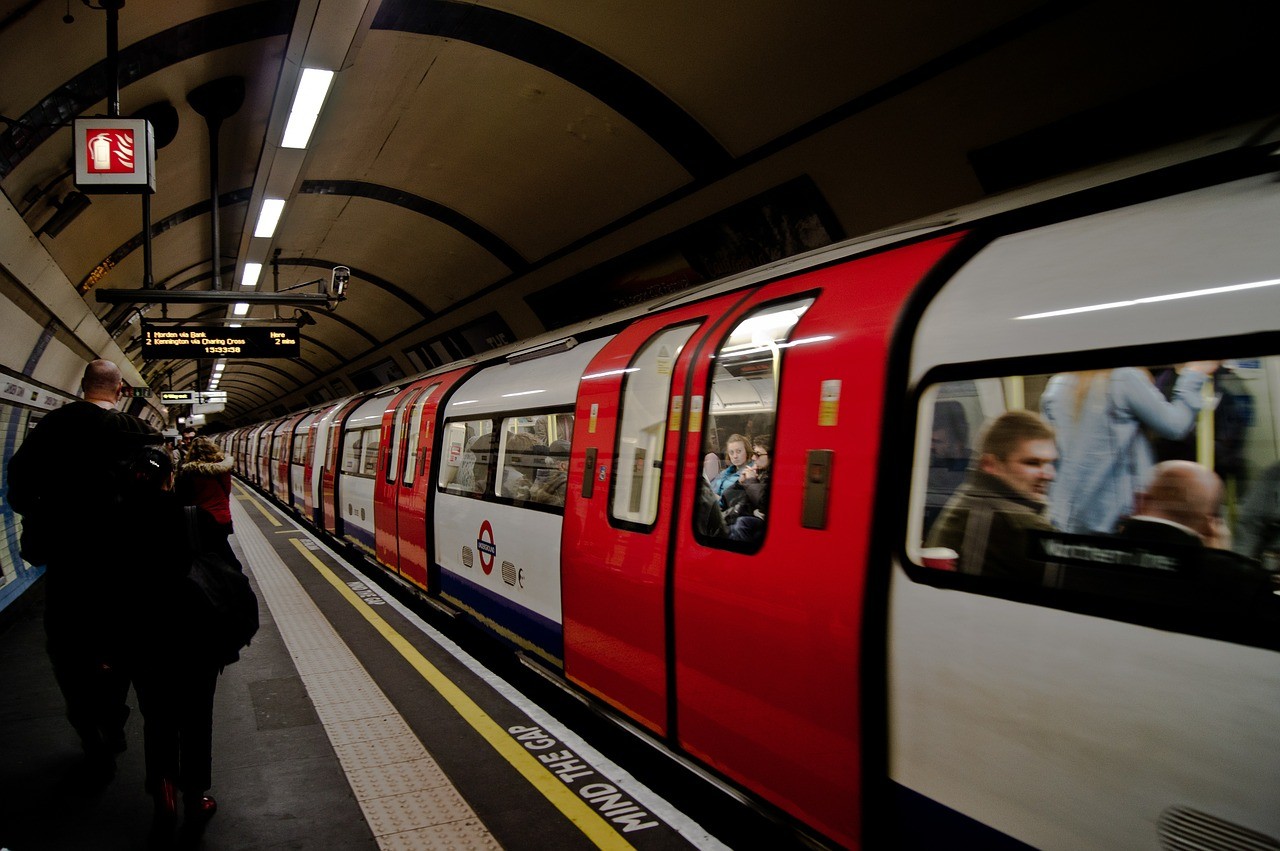
Basically, read the Tube line boards from top to bottom and if the name of your destination appears after your departure station, BINGO!
If to arrive at your destination you have to change trains, you can use the tube maps to plan your route (you can get a paper copy at the station entrance). Follow the logic above to get on the first train and obviously get off at a station which is also served by another line. Change to the other line and continue to your destination.
For example, you have travelled to Victoria and you want to go to Sloane Square (on the yellow and green Circle & District lines. You will get off the tube at Victoria, but instead of following the "Exit" signs, follow the yellow and green Circle and District signs. You will find yourself in front of the station boards once again; look down the list to find which mentions Sloane Square after Victoria (in this case West) and follow these signs to the platform.
I advise you to stand on the right on the escalators - the left is for overtaking, so feel free to use it if you are in a hurry.
Don't worry if you get it wrong and end up travelling in the wrong direction or on the wrong line. It happens, we've all done it. Each tube has a map near the ceiling, showing all the stops. Check to see if your stop is after that of departure. If your destination is before that of your departure you have got on the wrong train; simply get off at the next stop, change platforms and get on the next train in the opposite direction.
On the Tube
Well-lit, (usually) clean, there will almost always be somewhere to sit. If not, there is plenty of standing or leaning space. If you are only travelling a short distance, sitting is not recommended. Give up your seats to elderly people and check before sitting if they are Priority Seats (e. g. for pregnant women, disabled or elderly people or children) so you can give your seat if necessary. You might be comfortably settled when a pregnant lady boards the train; please don't be rude or lazy. Stand up and offer you seat like a good English gentleman. (Be careful not to mistake pregnancy with a bit of a tummy - you could offend someone. )
"Mind the Gap"
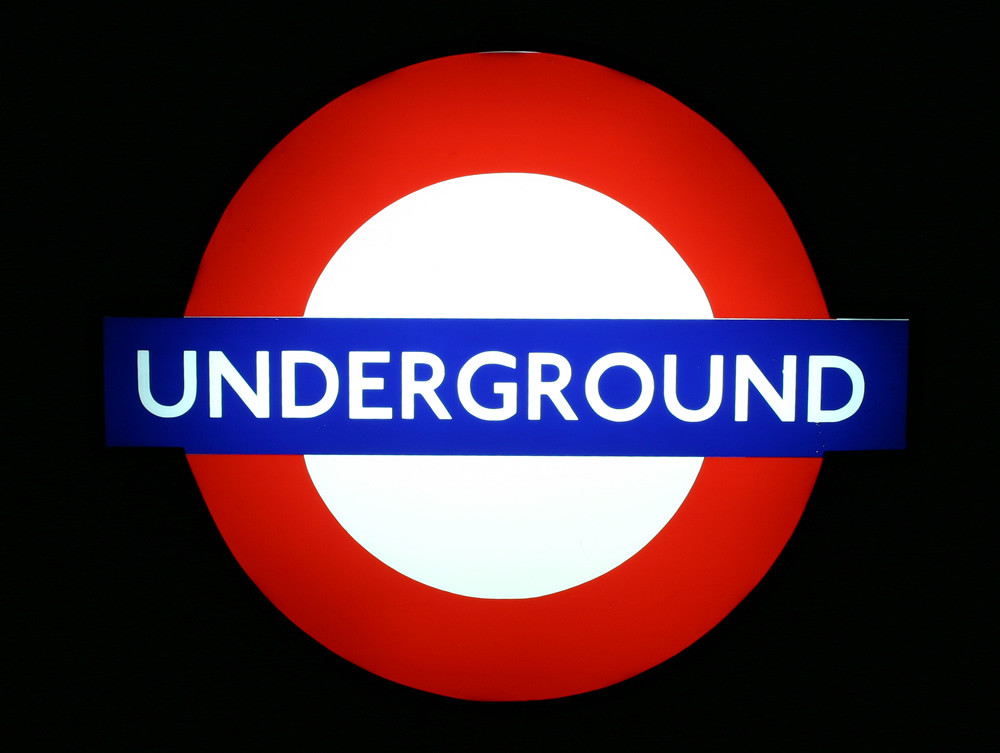
Before every stop, a voice will announce the next station. When your stop is approaching, start moving towards the door. Don't stay seated until the last moment, as not only do you have to be quick but you will get in the way of the people trying to get on the train. The unspoken rule is that people get off the train before those waiting get on.
When the doors open, a voice (usually female) will say "Mind the Gap". The voice is warning you to take care as you get off the train, to not trip on the space between the train and the platform.
Look for the exit signs which will take you to the surface. When you leave the station you will also need to scan your ticket or travel card at the ticket barriers. Pass through one by one and quickly; if you don't move quickly enough the barriers will close on you.
Oh, I know, it's a real stress: quick, go in, come out, get on, don't fall... This is the spirit of the London Underground, and especially if you find yourself travelling at peak times (6-8am when everyone is going to work, or 5-7pm when they are going home). The rest of the time it's not as chaotic as I have described. The chaos is mine!
Docklands Light Railway
The DLR is not used so much (at least not by me, but will be by others) - simply because it runs through a part of the city which has never been of much interest to me, except for reaching concerts at the O2 Arena or Comicon (Custom House for Excel), etc. In any case the DLR is simpler than the Underground - it runs above grounf so you can see where you're going and you can use the same ticket you bought for the bus and tube. Click here for the official DLR website. I have included the line map below. It only serves the Docklands area of London (hence the name), in the south and east. Services are not so frequent as the Tube (with generally 1-3 minutes' wait), while the DLR can be anything between 2-10 minutes.
On the Underground map below you can see all the train services shown - the Tube (each one with its own colour), the DLR (on the right in blue), the Overground (in orange, more to the south). Every type has an icon which you can find on the legend to one side so it should all be self-explanatory.
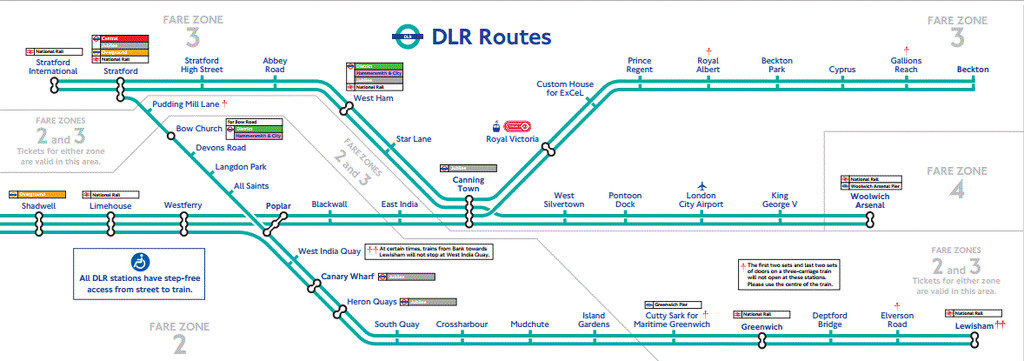
The Overground
The Overground is like the Underground but on the surface. Like the DLR, the trains run less frequently as well as being above ground and not least because it only covers small parts of the city. The reason that both these lines don't serve a greater part of the city is quite simple - they only visit parts of the city which are not so well-connected by the Underground. Aesthetically both the DLR and the Overground look like a hybrid of a metro and train. The DLR are often red and blue, while the Overground tend to be orange, white and blue.
You can still use the same tickets that you bought in the morning, which are valid on all types of transport and depending on the ticket that you have bought. Clapham Junction for example is an area not covered by the Underground, instead only by the Overground and by bus.
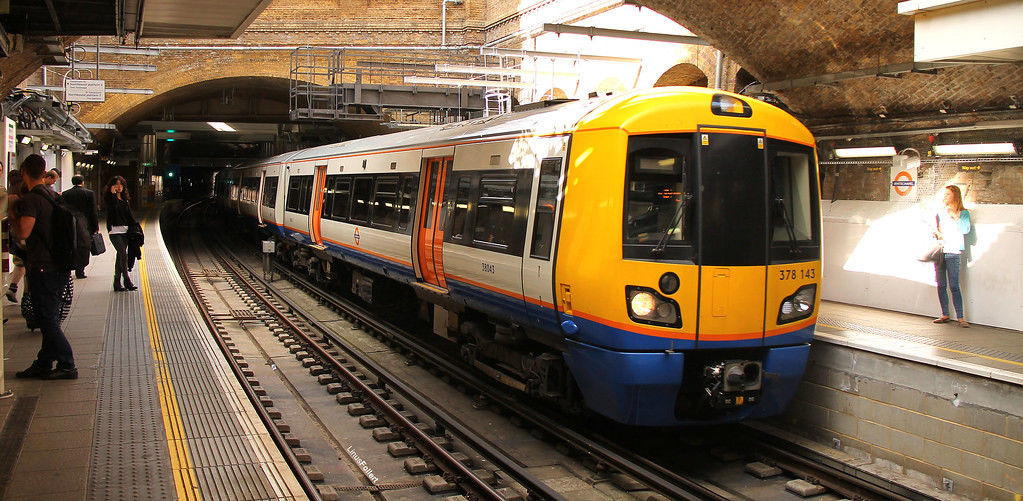
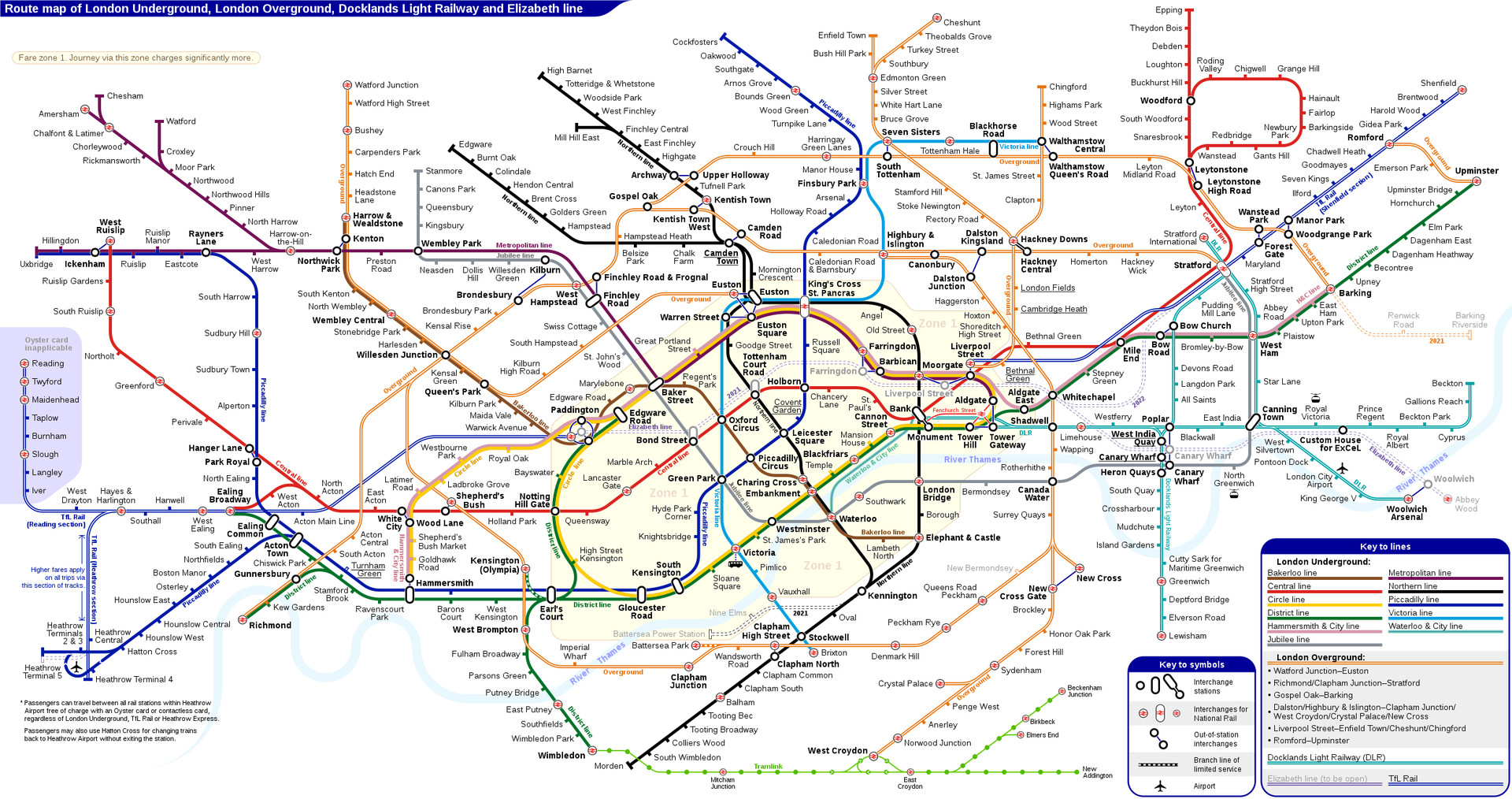
Bus
Tall, red and well turned-out. No, it's not the description of a man, but of the typical Double Decker Red London Buses. They have two levels, although there are also single decker normal buses, also red. Personally, I use buses the most, along with the tube. There are lots of stops, and the frequency really is incredible. With an average of one bus every 1-2 minutes, every Bus Stop has a digital board specifying the waiting time for each bus number. The board doesn't always work; if this is the case, a timetable can be found on a panel at each bus stop.
This panel also indicates which buses run at night and how often. At night they tend to run a little less frequently - although it is still a comprehensive service with a bus passing generally every 7-10 minutes. It may not be the bus you need, but at least you won't feel you are waiting alone and in vain for ages (as you might do in Italy... ). On the digital board, the word "Due" will often appear next to the first bus. For the Italians amongst you, this word doesn't mean the number 2, but actually means that the bus is arriving any moment. Just so you know.
Every bus has a number and this numbered service will take the same route to a particular destination. You can find all the information you need online, at the tube stations, directly at the bus stops and if you really want to, by telephone. Before 2014 you were able to buy your ticket directly on the bus. Since July 2014 this is no longer possible and you should buy or use your ticket from the tube station before getting on the bus, or use your Oyster Card.
As mentioned above, you can top up your Oyster Card with just £5 and be able to use the buses all day long, spending a maximum of £4.50. It's very convenient if you already know that you're only going to travel by bus. One of my favourite routes is the bus number 88 which departs from Clapham Common (south London in Zone 2 and on the black Northern Line of the Underground) and arrives at Camden Town (north London in Zone 3, also on the black Northern Line). I especially like this route because it passes through Central London offering marvellous views as it travels from south to north - all this in a half hour/forty minutes of travel time.
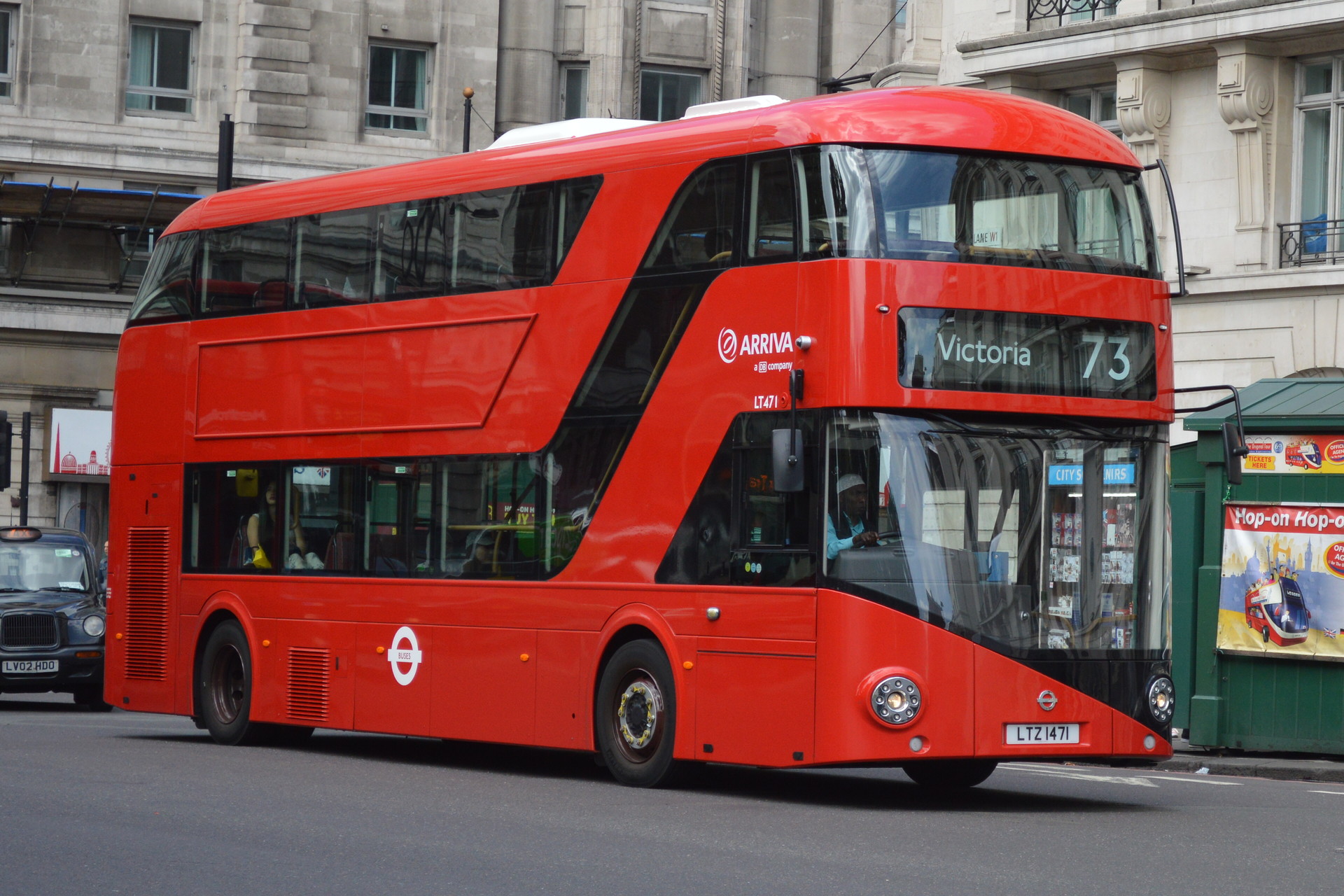
National Railway
This is a network of trains that connect London with the neighbouring villages, towns and cities, and passing through several London hub stations such as Clapham Junction or Putney. If you want to visit the surrounding area it is best to catch a train. Ticket prices change depending on the distance you want to travel. A train to Brighton (a town on the south coast) can cost between £10-20 (single or return) for a one hour journey.
Using the trains is very simple. Every station has a ticket machine as well as a ticket window so you can practice your English.
If you choose to use the ticket machine, type in the name of your destination and choose Single (one way) or Return (two ways). Select the date of travel (if you are buying for the following day, for example) and your method of payment (credit or debit card or in cash). Make sure you choose "Off Peak" when given the chance to do so. This means your ticket is valid at the times when the trains will be quieter (i. e. not at peak times during the Rush Hour) and is also cheaper.
If instead you want to speak to a real person, you just need to go to the window and tell them your destination, whether you want a single or return, how many people will be travelling, etc. You can still pay by cash or card. For the next train leaving to your destination you can ask the ticket attendant or look it up on the screens that you will find close to the platform entrances. The screens show the details of the next trains to depart from each platform, including the stops. Look for your train's platform, pass through the correct gate by inserting your ticket into the opening and voilá!
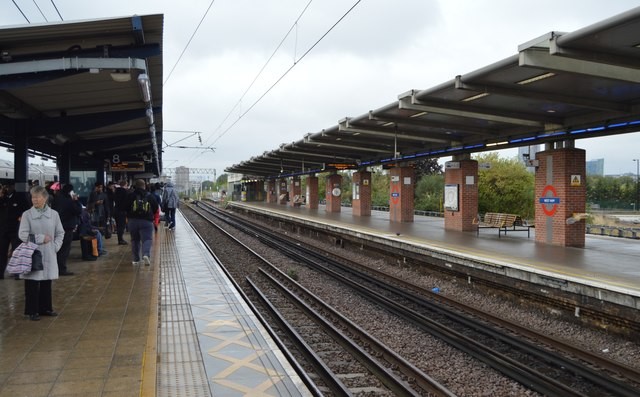
Tramlink
I don't know as much about these options because I haven't used them as much. The Tramlink only covers a small part of London and is relatively new to the transport scene (starting in 2000). That said, use of the tram is increasing and it serves parts of south London including Wimbledon, Mitcham and West Croydon - travelling east to west and back again. (That's why I have never used it. ) It is still part of TFL (Transport for London) and therefore will be easy to use like the rest of the transport system.

Bicycles
Bikes are used by other people (I'm not the adventurous sort). Buying or renting a bike in London is a great way to save, keep fit, get lost and have accidents...! In my experience, because the traffic in London is very orderly it is also fast, and it seems that as soon as the traffic lights turn green it doesn't seem to matter to the vehicle drivers who or what is on the pedestrian crossings.
Another issue for cyclists is that in many cases the cycle lanes are often shared with the buses. This is improving with the creation of dedicated Cycle Super Highways which aim to reduce motorised traffic in London. So don your helmets, gather your courage and give it a go! There are Barclay's Bikes which are blue and for hire 24 hours a day on the street. The price is not bad at all and you can pay by card. I remember paying £1.50 for a whole afternoon, cycling through unknown areas, losing myself on the path of life until finally, after 3 hours of frenetic madness, I saw a bike parking point. I left the bike there and never touched on again. It's definitely an experience to try!
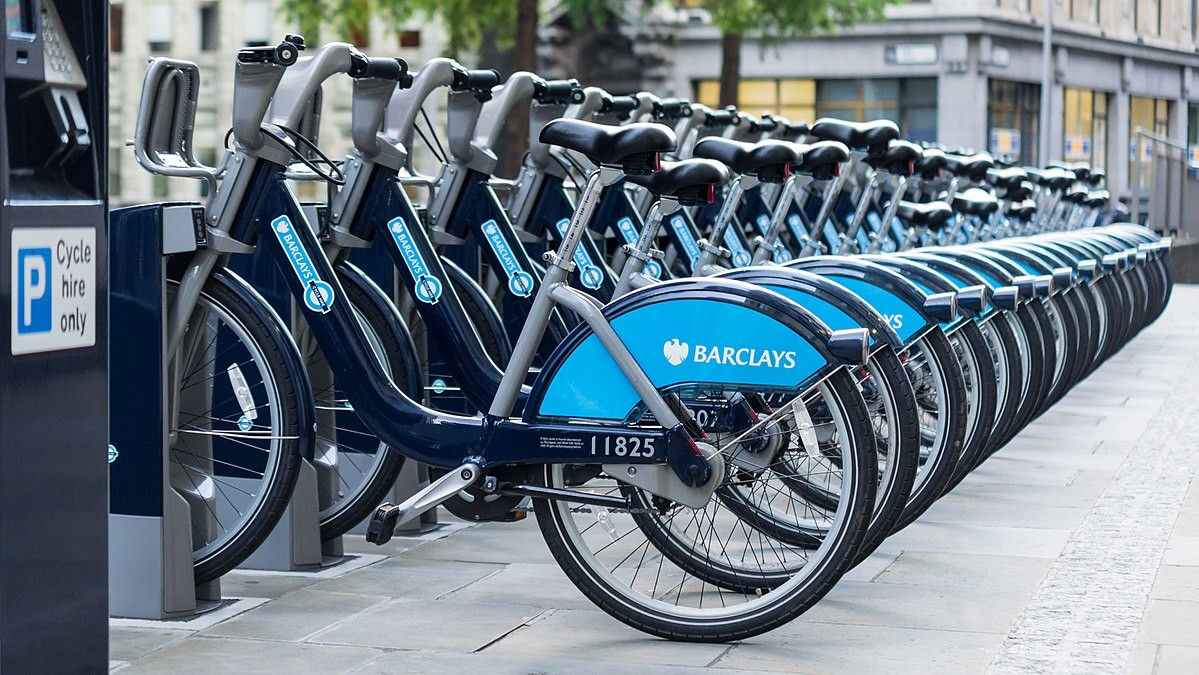
Taxis
Taxis are known as the "Black Cabs" and they are not especially convenient. There are several different companies; the Black Cabs can be flagged down but are the most expensive (make sure you check the price before you get in). They are not always black - they can also be grey, red, white - but it doesn't matter; they have a particular shape and are recognisable from the other types of taxi. There are companies such as Addison Lee which are more affordable, and I often call them to take me to Victoria where I catch a bus to the airport. This used to cost me £10 for a 15 minute journey. It's expensive, but justifiable in an emergency, in a hurry or simply because you can afford it. It isn't a bad option, especially at night.

So that's everything I can think of about the transport around London. As always, I really hope it has been useful. If you are interested in knowing more about London, please click on the links at the beginning of this article.
Next time we will be looking at The English Gastronomy.
And as always, Enjoy your trip!
Photo gallery
Content available in other languages
Want to have your own Erasmus blog?
If you are experiencing living abroad, you're an avid traveller or want to promote the city where you live... create your own blog and share your adventures!
I want to create my Erasmus blog! →

























Comments (0 comments)